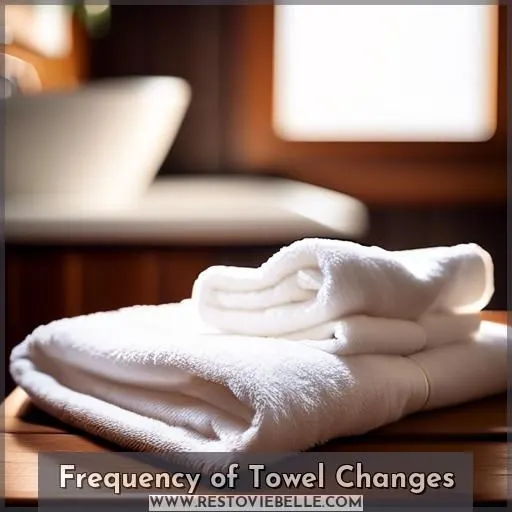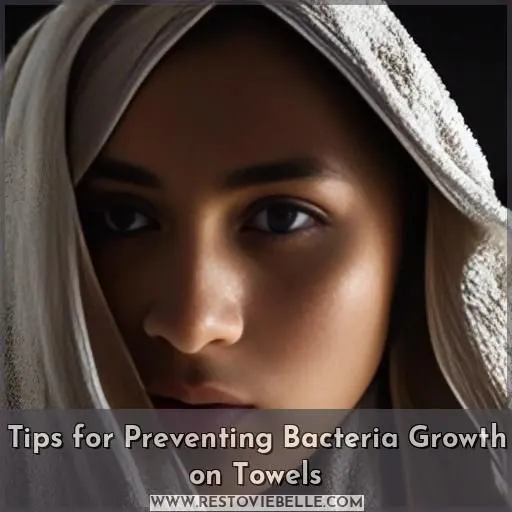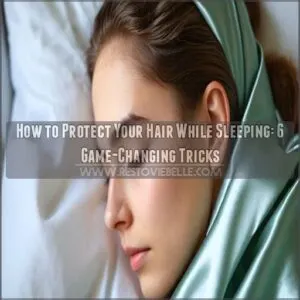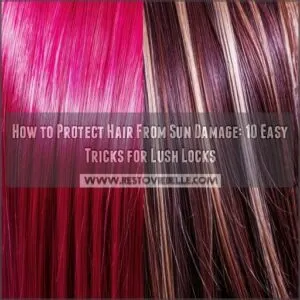This site is supported by our readers. We may earn a commission, at no cost to you, if you purchase through links.

It is not recommended to use the same hair towel for a week. Towels absorb a lot of water and harbor bacteria that can grow over time, leading to skin irritation, acne, and folliculitis. To prevent these issues, it is best to wash your bath towels every 3-4 days and hand towels daily.
Additionally, if you have a weakened immune system or are sick, it is important to wash your towels more frequently.
Table Of Contents
- Key Takeaways
- Is It Okay to Use the Same Hair Towel for a Week?
- Frequency of Towel Changes
- Tips for Preventing Bacteria Growth on Towels
- Special Considerations for Washing Towels
- Health Implications of Reusing Towels
- Frequently Asked Questions (FAQs)
- What is the recommended frequency for washing hair towels?
- Can using a hair towel instead of a regular towel prevent hygral fatigue?
- How does the material of a hair towel affect hair damage?
- Is it necessary to use a hair towel for all hair types, or can regular towels be used for some?
- How does the design of a hair towel help reduce stress on the scalp?
- Conclusion
Key Takeaways
- Towels absorb a lot of water and can harbor bacteria over time, leading to skin issues like irritation, acne, and folliculitis.
- It is recommended to wash bath towels every 3-4 days and hand towels daily to prevent the growth of bacteria.
- Storing towels in a dry, well-ventilated area and avoiding sharing them can help minimize bacterial proliferation.
- Using microfiber towels for hair can reduce drying time and decrease the risk of damage and stress on the scalp.
Is It Okay to Use the Same Hair Towel for a Week?
Yes, using the same hair towel for a week is generally safe as long as it’s washed regularly. However, it’s recommended to change towels every few days to prevent the build-up of bacteria and to maintain ideal hair health.
Frequency of Towel Changes
It is generally recommended to change bath towels every 3-4 days and hand towels daily. The frequency of towel changes may depend on factors such as whether they’re shared or damp. If someone is sick or has a weakened immune system, towels should be washed more frequently.
It is essential to store towels in a dry, well-ventilated area and avoid sharing them to prevent the spread of bacteria.
Bath Towels
Washing bath towels is essential for preserving hygiene and deterring the proliferation of bacteria. Here are some guidelines on the frequency of bath towel washing and measures to prevent bacterial growth:
- Wash bath towels every 3-4 days.
- Wash more frequently if they’re shared or moist.
- Clean towels in hot water with detergent.
- Suspend towels to dry after use.
- Refrain from sharing towels.
- Wash hands before and after using towels.
- Store towels in a dry location.
Additionally, high humidity, damp spaces, and towels with higher thread counts can foster bacterial growth. To deter bacterial growth on towels, keep towels hanging until washed, keep bathroom doors open for air circulation, follow care instructions on towel labels, ascertain towels are completely dry before removing from the dryer, and replace gym towels daily.
Special considerations for washing towels include washing more frequently if someone is ill or has a weakened immune system. Pregnant women, young children, and elderly individuals may need more frequent towel washing. Individuals with compromised immune systems should wash towels more often.
Handwashing is more effective in preventing bacteria spread, while towel washing helps curtail bacteria growth on towels. Skin harbors bacteria, viruses, and fungi (microorganisms), and drying with a towel transfers microorganisms to the towel. Moisture and dead skin cells provide nourishment for microorganisms, and sharing towels increases moisture and microorganism levels. Damp towels in bathrooms promote microorganism growth.
Reusing towels generally doesn’t pose health risks for most individuals, but folliculitis (bacterial hair follicle infection) is a potential risk. Acne increases susceptibility to folliculitis, and folliculitis is treatable with antibiotics. Eczema may increase the risk of infections from towel reuse.
Hand Towels
Concerning hand towels, the regularity of replacement is paramount for preserving sanitation. Hand towels must be replaced each day and cleaned in boiling water with cleaning agent to hinder microorganism transmission and the development of moist towel growth.
Sharing hand towels may elevate the likelihood of eczema infections and folliculitis, a bacterial hair follicle infection. Moreover, hand towels can harbor microorganisms that can inflict harm to hair, worsening dryness, frizz, and damage.
To safeguard hair well-being, contemplate employing microfiber towels that dry more swiftly and storing towels in a dry, well-ventilated area.
Tips for Preventing Bacteria Growth on Towels
To prevent bacteria growth on towels, it’s recommended to follow these tips:
- Keep towels hanging until washed.
- Keep bathroom doors open for air circulation.
- Follow care instructions on towel labels.
- Make sure towels are completely dry before removing from the dryer.
- Switch out gym towels daily.
These practices help reduce the risk of bacterial growth and maintain the hygiene of your towels.
Keep Towels Hanging Until Washed
Hanging towels until washed is vital for preventing the growth of bacteria. Damp towels are an ideal breeding ground for bacteria, so avoiding storing them in humid environments like bathrooms is essential. By keeping towels hanging, you enable them to dry thoroughly, minimizing the likelihood of bacterial proliferation. This practice not only maintains towel sanitation but also promotes healthy hair care by preventing hygral fatigue, which can harm hair.
Keep Bathroom Doors Open for Air Circulation
Keeping bathroom doors open for air circulation is an effective way to prevent bacteria growth on towels. This simple action promotes moisture prevention and reduces the risk of folliculitis, a bacterial hair follicle infection. By allowing air to circulate, you can minimize the dampness that fosters bacterial growth, ensuring a healthier approach to hair care.
Follow Care Instructions on Towel Labels
Washing towels is essential for maintaining good hygiene and preventing the spread of bacteria. Proper towel care includes following care instructions on towel labels, ensuring towels are completely dry before removing them from the dryer, and washing them in hot water with detergent. Here are some tips for preventing bacteria growth on towels:
- Ensure Towels Are Completely Dry Before Removing From Dryer: Towels that aren’t completely dry can promote bacterial growth. Allow towels to dry thoroughly in the dryer before removing them to prevent the growth of bacteria.
- Switch Out Gym Towels Daily: Gym towels should be washed daily to prevent the spread of bacteria and sweat, which can lead to skin irritation and infections.
- Wash Towels in Hot Water with Detergent: Washing towels in hot water helps to kill bacteria and remove any residue that could contribute to bacterial growth.
- Store Towels in a Dry, Well-Ventilated Area: Towels should be stored in a dry, well-ventilated area to prevent the growth of bacteria and mildew.
Ensure Towels Are Completely Dry Before Removing From Dryer
To prevent bacterial buildup on towels, make certain they’re thoroughly dry before taking them out of the dryer. This simple measure can greatly reduce the risk of health problems. A table below provides the suggested drying times for different types of towels:
| Type of Towel | Recommended Drying Time |
|---|---|
| Bath Towels | 2-3 hours |
| Hand Towels | 1-2 hours |
| Gym Towels | 1 hour |
Switch Out Gym Towels Daily
Switching out your gym towel daily is like hitting the refresh button on hygiene—no sharing, no lingering bacteria, just a clean slate for every sweat session. It’s a simple, yet effective, defense strategy.
Special Considerations for Washing Towels
It is generally advised to launder bath towels once a week or after 3-5 uses. However, if towels remain moist or someone is ill, they should be washed more frequently. Towels kept in humid spaces, such as bathrooms, may harbor increased bacteria. Towels with higher thread counts may take longer to dry and accumulate more bacteria.
Towels that are stored in hampers may spread bacteria to other clothes. To prevent bacteria growth on towels, it’s important to keep them hanging until washed, keep bathroom doors open for air circulation, follow care instructions on towel labels, make sure towels are completely dry before removing from dryer, and switch out gym towels daily.
which is after 3-5 uses
Washing towels is essential for maintaining hygiene and preventing bacterial growth. The frequency of towel washing depends on various factors, including the type of towel, its usage, and the presence of bacteria or other microorganisms. Here are some tips for washing towels:
- Wash bath towels after 3-5 uses to guarantee they’re free of bacteria and other contaminants.
- Hand towels should be washed daily, as they’re used more frequently and are more susceptible to bacterial growth.
- Gym towels should be washed after each use, as they come into contact with sweat and bacteria.
- Towels that stay damp or are kept in damp spaces, such as bathrooms, should be washed more frequently to prevent bacterial growth.
- Towels with higher thread counts may take longer to dry and accumulate more bacteria, so they should be washed more often.
- Towels that sit in hampers may spread bacteria to other clothes, so it’s best to wash them as soon as possible.
To prevent bacterial growth on towels, follow these tips:
- Keep towels hanging until washed to allow them to dry completely.
- Keep bathroom doors open for air circulation to reduce humidity.
- Follow care instructions on towel labels, including washing temperatures and drying methods.
- Ensure towels are completely dry before removing them from the dryer to prevent mildew growth.
- Switch out gym towels daily and wash them separately to avoid cross-contamination.
Special considerations for washing towels include:
- Washing towels more frequently if someone is sick or has a weakened immune system.
- Considering the age and health status of towel users, such as pregnant women, young children, and elderly individuals, who may require more frequent towel washing.
- People with compromised immune systems should wash towels more often to prevent infections.
Handwashing is more effective in preventing bacteria spread, while towel washing helps limit bacteria growth on towels. Washing towels and storing them properly reduces the risk of health problems.
damp spaces
Damp towels can create an environment that promotes bacterial growth. Research has shown that towels kept in damp spaces, such as bathrooms, may have increased bacteria. Additionally, towels with higher thread counts may take longer to dry and accumulate more bacteria.
To prevent bacterial growth, it’s critical to keep towels hanging until washed, as this allows them to dry fully. If you share towels, it’s imperative to make sure they’re completely dry before use to minimize the risk of bacterial transfer.
such as folliculitis and acne
Damp towels are like a party for bacteria growth, especially when shared. This unwelcome bash can lead to skin woes like folliculitis and acne, turning your quest for cleanliness into a health risk.
skin conditions
Skin conditions can markedly affect the cleanliness and hygiene of towels. Individuals with sensitive or acne-prone skin are at a greater risk of experiencing breakouts because of the presence of bacteria and harmful substances on towels.
Furthermore, people with weakened immune systems, such as pregnant women, young children, and the elderly, may require more regular towel washing to prevent the spread of bacteria.
well-ventilated areas
Storing your towel in a breezy spot is akin to denying germs a warm embrace; ample air circulation is indispensable for combating the perils of damp towels and the unwelcome passengers of microorganism transmission.
Health Implications of Reusing Towels
Using the same hair towel for a week could increase your risk of folliculitis, a bacterial hair follicle infection. Acne can also increase your susceptibility to folliculitis. However, folliculitis is treatable with antibiotics.
Folliculitis (bacterial Hair Follicle Infection) is a Potential Risk
Folliculitis, a bacterial hair follicle infection, is a potential risk when reusing towels. To minimize this risk, avoid sharing towels, store them in a dry, well-ventilated area, wash them in hot water with detergent, and air-dry them. Proper care and hygiene can help prevent the spread of bacteria on towels.
Acne Increases Susceptibility to Folliculitis
Reusing towels daily can increase the risk of folliculitis, especially for those with acne. Acne creates an environment where bacteria can thrive, making it easier for folliculitis to develop. To reduce this risk, consider washing towels more frequently or using a new one each day.
Folliculitis is Treatable With Antibiotics
Folliculitis, a bacterial hair follicle infection, is a potential risk when reusing towels. However, it’s treatable with antibiotics. To prevent folliculitis, make sure towels are completely dry before reusing, and switch out gym towels daily. Keep towels hanging until washed, and store them in a dry, well-ventilated area. For severe cases, antibiotics may be prescribed.
Frequently Asked Questions (FAQs)
What is the recommended frequency for washing hair towels?
It is generally recommended to wash your microfiber hair towel after every three uses. Washing your hair towel more frequently can damage the fibers, while not washing it often enough leaves dirt and germs on the towel.
Can using a hair towel instead of a regular towel prevent hygral fatigue?
Yes, using a hair towel instead of a regular one can indeed prevent hygral fatigue. These towels are designed to quickly wick away moisture, reducing the risk of damage from prolonged wetness.
How does the material of a hair towel affect hair damage?
The fabric of a hair towel can profoundly impact hair integrity. Regular cotton towels can induce breakage and frizz due to their coarse texture and propensity to absorb excessive moisture, resulting in over-drying.
Conversely, microfiber towels are less abrasive on hair as they possess finer fibers that generate less friction and exhibit greater absorbency, minimizing drying time and the likelihood of breakage.
When selecting a hair towel, take into account the fabric, as microfiber towels are generally more advantageous for hair well-being.
Is it necessary to use a hair towel for all hair types, or can regular towels be used for some?
Hair towels, especially microfiber ones, are a game-changer for all hair types, reducing damage and frizz. But hey, if you’re in a pinch, a gentle pat-down with a regular towel won’t spell disaster.
How does the design of a hair towel help reduce stress on the scalp?
Using a hair towel can help reduce stress on the scalp by minimizing the damage caused by regular towels. Hair towels are designed to be more gentle on the hair and scalp, as they’re made of super-absorbent materials and fabrics that can rapidly suck up moisture from the hair. This reduces the need for excessive heat treatments when drying your hair, which can cause damage to the hair strands.
Additionally, hair towels are designed to wrap securely around the head without the need for pins or clips, allowing for less resistance and stress on the scalp. The snug fit of a hair towel also helps keep it in place without tugging or pulling at the hairline, reducing the risk of breakage.
Overall, using a hair towel can contribute to healthier, happier hair by reducing stress on the scalp and minimizing damage caused by regular towels.
Conclusion
To conclude succinctly, using the same hair towel for a week is a definite no-no. This practice can transform your towel into a haven for bacteria, resulting in skin ailments such as acne and folliculitis.
To preserve your skin’s well-being, swap out your bath towels every 3-4 days and your hand towels daily. A sanitary towel is your skin’s closest ally, safeguarding you from undesirable bacterial visitors and maintaining ideal skin health.









